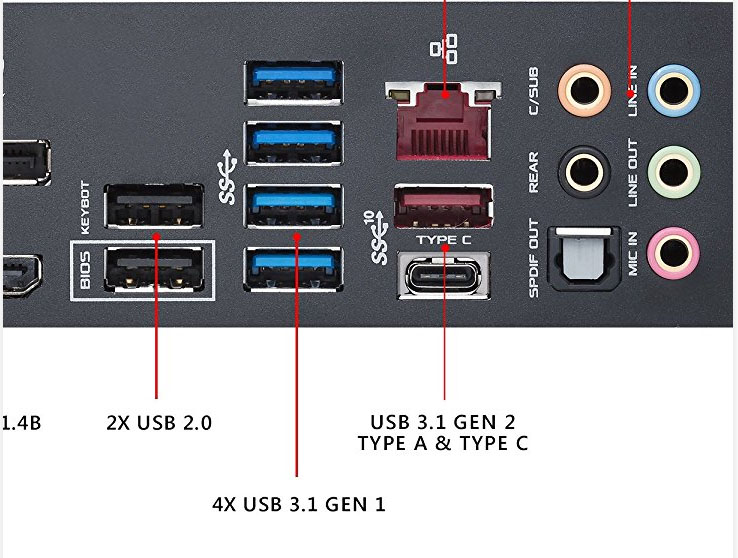

The USB Type C interface improves on the Type A connector by allowing you to plug it in without having to turn it over a dozen times. That connector has remained the same as we’ve progressed from USB 1 to USB 2 to modern USB 3 devices. If you just want the CoPro, then youll need one with 4 pins (or clip the 5th pin) and put it on the 4-pin side of the 9-pin USB connector. Youll need headers for their connections on your motherboard to connect. You would need 2 4/5 pin to USB-A adapters - that would give you both the CoPro as well as the internal hub. Have you ever tried to plug in a USB cable only to be unable to do so until you turned it over and tried again? The USB Type-A connector is that handy small device. I just noticed for the first time that my Gigabyte 890XA has an internal USB 3.

A chart containing the branding specifications of USB 3.2 versions is given below. SuperSpeed USB, SuperSpeed USB 10Gbps, and SuperSpeed USB 20Gbps are the marketing designations for USB 3.2 devices.

It’s important to know about the models of USB 3.2 Gen 1 and 2 names to achieve the finest possible connection between your devices. Each of the three USB 3.2 versions has its own marketing terms, which the USB-IF encourages suppliers to use on their packaging. If your computer case lacks a front USB Type-C connector, you can purchase a USB Type-C bracket that sits on the back of your case and connects to the motherboard’s “Key-A” USB 3.1/3.2 adapter. This header will be found on inferior motherboards, and it will be labeled as “USB 3.2 Gen 1 (5 Gbit) front panel Type-C connector.” This header will be advertised as a “USB 3.2 Gen 2 (10 Gbit) front panel Type-C connector” on more expensive boards with more capable USB 3.2 drivers. That implies that depending on whatever chip it is “resting on” on the motherboard, this connector can deliver speeds of 20 Gbit, 10 Gbit, or 5 Gbit. As a result, all 20 pins are dedicated to a single connector ( USB Type-C). The front of this one does not divide into two connectors. It contains 20 pins as well but is designed for one USB Type-C or one USB 3 Type-A front panel port. The smaller USB 3.1 / USB 3.2 header (black) was initially seen on ASUS motherboards and is referred to as the “Key-A” header or sometimes referred to as “Type-E”. That’s why, even on the most costly motherboards, front panel Type-A USB 3 ports are always just 5 Gbit. It links two USB 3 Type-A ports (10 pins each) on the front panel of the computer chassis, giving each of the 5 Gbit speeds. The USB 3.0 / 3.1 Gen 1 / 3.2 Gen 1 header is the blue 20 pin (2×10 pin) connector found on inbuilt motherboard USB 3 connectors. Furthermore, the USB 3.1 Gen 2 spec will be renamed to USB 3.2 Gen 2. The standard formerly as USB 3.0 or USB 3.1 Gen 1 will now be alluded to as USB 3.2 Gen 1. In the latter week of February 2019, the USB-IF (USB Implementers Forum) disclosed the rebranding of both the USB 3.0 and USB 3.1 standards. And the current announcement will leave the majority of people bewildered once more. The perplexing naming systems of newer and faster USB standards seem to go on forever.


 0 kommentar(er)
0 kommentar(er)
